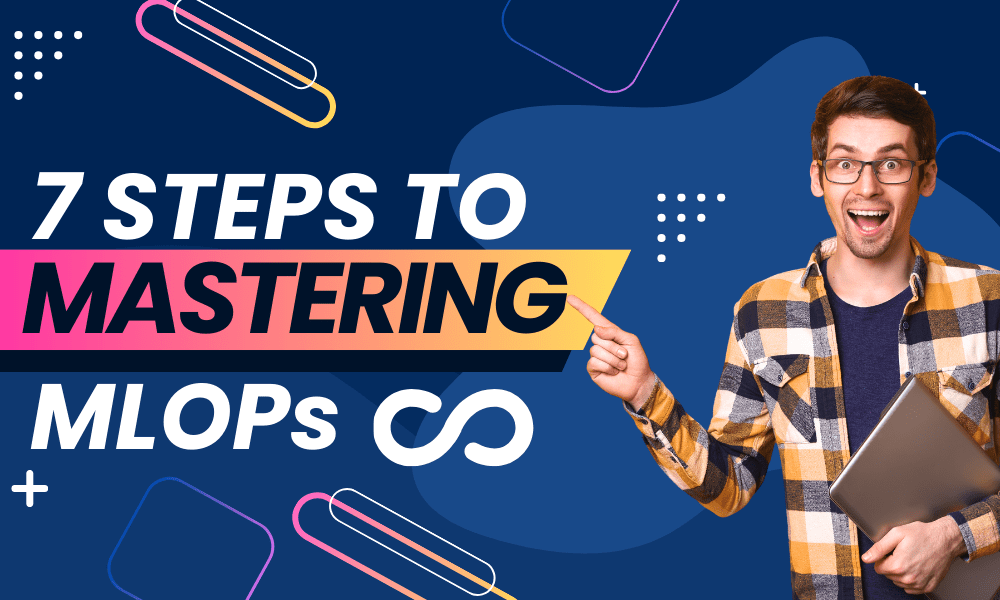
Image by Author
Many companies today aim to integrate AI into their operations, particularly by refining large language models and putting them into production. This has led to a growing need for MLOps engineering. Companies now seek individuals who can automate and optimize the process of training, assessing, versioning, deploying, and monitoring models in cloud environments, rather than just hiring data scientists or machine learning engineers.
In this introductory guide, we will concentrate on the key seven steps to mastering MLOps engineering. These steps include setting up the environment, experiment tracing and versioning, orchestration, continuous integration/continuous delivery (CI/CD), model serving and deployment, and model monitoring. In the final step, we will construct a fully automated end-to-end machine learning pipeline using various MLOps tools.
In order to train and evaluate machine learning models effectively, you will need to establish both local and cloud environments. This involves containerizing machine learning pipelines, models, and frameworks using Docker. You will also learn to utilize Kubernetes to automate the deployment, scaling, and management of these containerized applications.
By the end of this stage, you will have gained familiarity with a Cloud platform of your choice (such as AWS, Google Cloud, or Azure) and understand how to use Terraform for infrastructure as code to automate the setup of your cloud infrastructure.
Note: It is important to have a basic understanding of Docker, Git, and familiarity with command line tools. If you have a background in software engineering, you may be able to skip this part.
You will learn to use MLflow for tracking machine learning experiments, DVC for model and data versioning, and Git for code versioning. These practices are crucial for maintaining a well-documented, auditable, and scalable ML workflow, ultimately contributing to the success and efficiency of ML projects.
Step three introduces the use of orchestration tools like Apache Airflow or Prefect to automate and schedule ML workflows. These tools help ensure a seamless and efficient pipeline from data to deployment, making each step modular and reusable across different projects.
The integration of Continuous Integration and Continuous Deployment (CI/CD) practices into ML workflows is covered in step four. Tools like Jenkins, GitLab CI, and GitHub Actions can automate the testing and deployment of ML models, ensuring efficient and safe changes implementation.
Step five delves into model serving, a vital aspect of effectively utilizing ML models in production environments. Employing model serving frameworks such as BentoML, Kubeflow, Ray Serve, or TFServing, enables efficient deployment of models as microservices, making them accessible and scalable across different applications and services.
In step six, monitoring tools like Evidently, Fiddler, or custom code are used to keep track of model performance and detect changes in data over time. Finally, the last step involves building an end-to-end ML project using all the knowledge gained in the previous steps.
For further learning, consider enrolling in an MLOps Engineering course that covers all seven steps comprehensively. In this guide, we have explored the essential tools, concepts, and processes required to become an expert in MLOps engineering.
Abid Ali Awan (@1abidaliawan) is a certified data scientist professional with a passion for building machine learning models. Currently focused on content creation and technical blogging on machine learning and data science technologies, Abid holds a Master’s degree in technology management and a bachelor’s degree in telecommunication engineering. His vision is to develop an AI product using a graph neural network to assist students facing mental health challenges.



